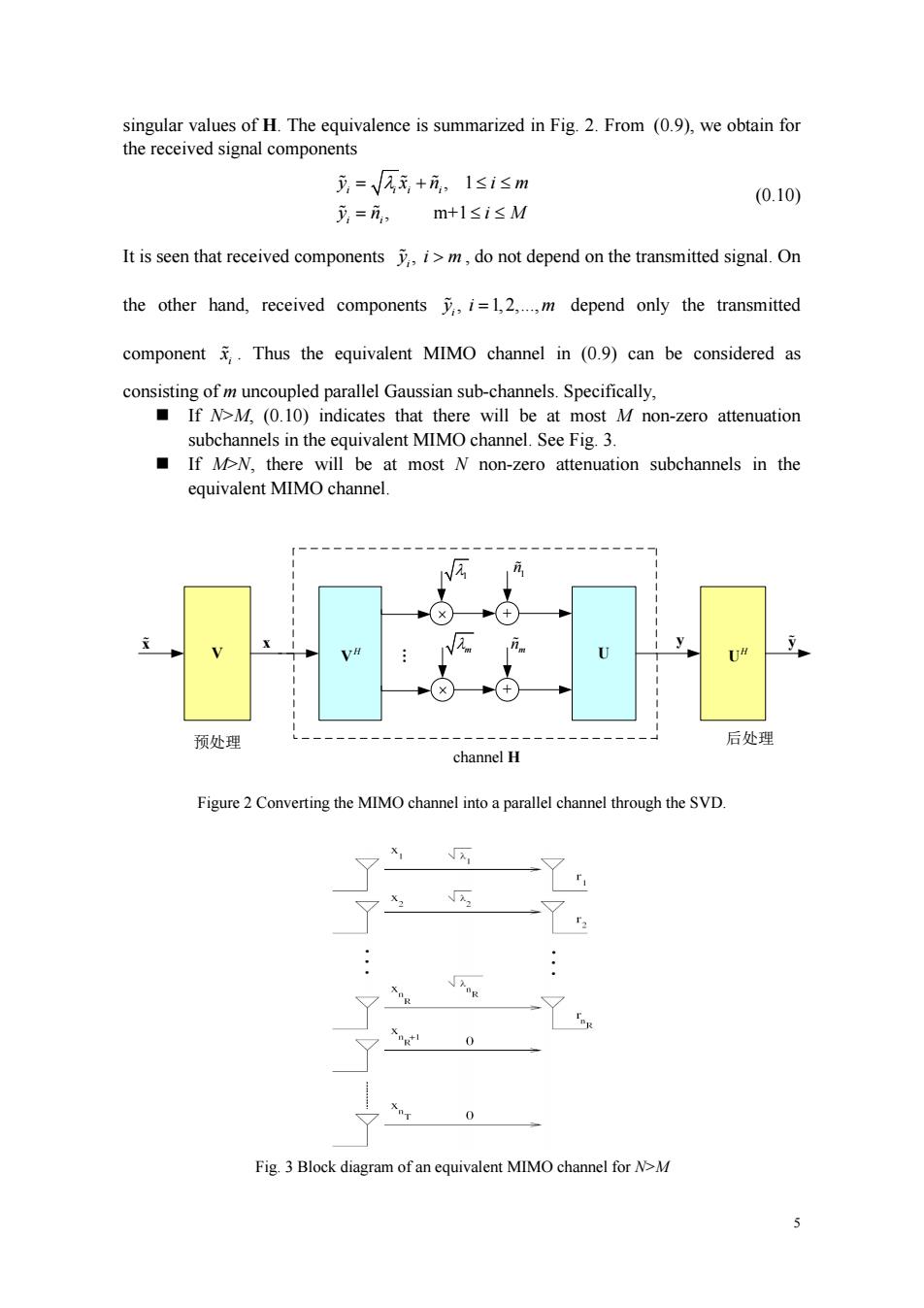正在加载图片...

singular values of H.The equivalence is summarized in Fig.2.From (0.9).we obtain for the received signal components 元=V元+i,1≤i≤m (0.10) y=i,m+1≤i≤M It is seen that received components,i>m,do not depend on the transmitted signal.On the other hand,received components=1,2.m depend only the transmitted component Thus the equivalent MIMO channel in (0.9)can be considered as consisting of m uncoupled parallel Gaussian sub-channels.Specifically. If N>M,(0.10)indicates that there will be at most M non-zero attenuation subchar If M-N,there will be at most N non-zero attenuation subchannels in the equivalent MIMO channel. channel H Figure 2 Converting the MIMO channel into a parallel channel through the SVD. 0 Fig.3 Block diagram of an equivalent MIMO channel for N>M 5 singular values of H. The equivalence is summarized in Fig. 2. From (0.9), we obtain for the received signal components , 1 , m+1 i ii i i i y x n im y n iM = + ≤≤ λ = ≤≤ (0.10) It is seen that received components , i y i m> , do not depend on the transmitted signal. On the other hand, received components , 1,2,., i y i m = depend only the transmitted component i x . Thus the equivalent MIMO channel in (0.9) can be considered as consisting of m uncoupled parallel Gaussian sub-channels. Specifically, If N>M, (0.10) indicates that there will be at most M non-zero attenuation subchannels in the equivalent MIMO channel. See Fig. 3. If M>N, there will be at most N non-zero attenuation subchannels in the equivalent MIMO channel. V U x H V . × × + + H U λ1 λm 1 n mn y 预处理 后处理 channel H x y Figure 2 Converting the MIMO channel into a parallel channel through the SVD. Fig. 3 Block diagram of an equivalent MIMO channel for N>M